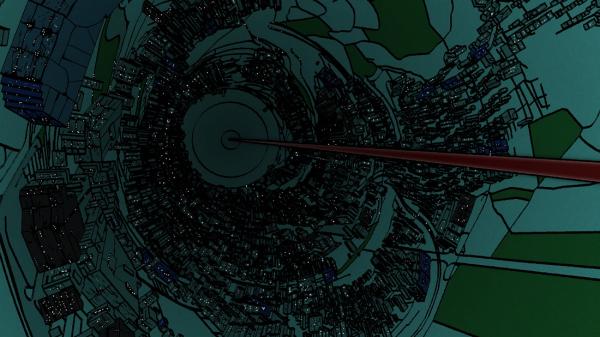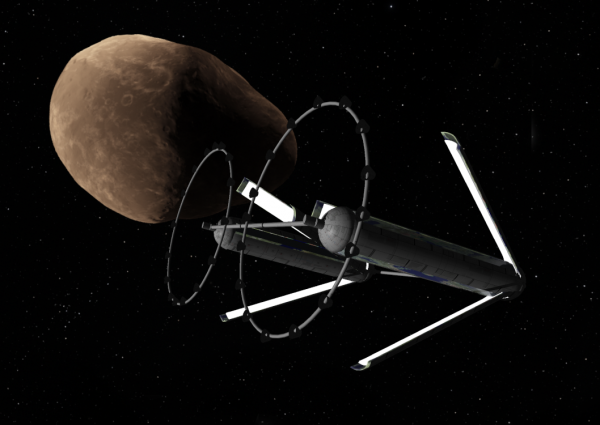BY LETTER
O'Neill Cylinder
Technology > Technology Type or Material > Drytech/Hylotech
Technology > Technology Levels > High Tech / Hitech
Technology > Application > Infrastructure
Technology > Technology Levels > High Tech / Hitech
Technology > Application > Infrastructure
Rotating space habitat, usually consisting of a pair of counter-rotating cylinders | |
 Image from Jedidia | |
| Interior of an O'Neill cylinder by night | |
A pair of cylindrical orbital space colonies that rotate around their respective axis to produce simulated gravity (one rotates clockwise and the other counter clockwise to minimize torques). Usually between 10 to 100 km long, with mirrors providing sunlight and simulating the day/night cycle.
The structure is large enough to have its own self-contained ecosystem, microclimate, etc. Named after the Atomic Age Old Earth visionary Gerard O'Neill.
 Image from Steve Bowers | |
| An O'Neill cylinder pair at New L4 in front of the asteroid New Hektor | |
By managing the rotation rates of each of the cylinders, the long axes could be oriented in any chosen direction. O'Neill proposed that the orientation of the cylinders could be managed so that they permanently pointed towards the Sun, and mirrors could then be used to illuminate the interior surface through long, strip like windows.
Each cylinder in a classic O'Neill colony is 3 kilometres in radius, and 30 kilometres long. Such a colony can support up to 10 million people. Each cylinder is divided into three sections by the window strips, with parkland and agricultural land providing a complete closed ecology. To simulate night the mirrors are adjusted to reduce the amount of sunlight coming in.
O'Neill's original design included two rings of small agricultural modules, each module rotating just enough to allow the crops to grow under low gravity conditions. In lower light conditions such agricultural rings require larger sunlight collection surfaces, so often orbit separately from the inhabited cylinders.
 Image from Steve Bowers | |
| Conchobar cylinder pair; this design includes petal-like light collectors which gather and focus the light using arrays of miniature steerable mirrors | |
Related Articles
- Banks' Orbital
- Bishop Ring
- McKendree Cylinder
- Orbital (habitat)
- Orbital (political unit) - Text by M. Alan Kazlev
Originally, a nation state or city state based on habitats in orbit around Old Earth. Over the course of the Interplanetary Age the term came to be used for any such state in Solsys. By early First Federation times the term Orbital was used more broadly for any independent or semi-independent state based on a hab in orbit around a planet. - Rotating Space Habitats
- Siris Habitat
- Stanford Torus
Appears in Topics
Development Notes
Text by M. Alan Kazlev
Initially published on 17 December 2001.
Initially published on 17 December 2001.







